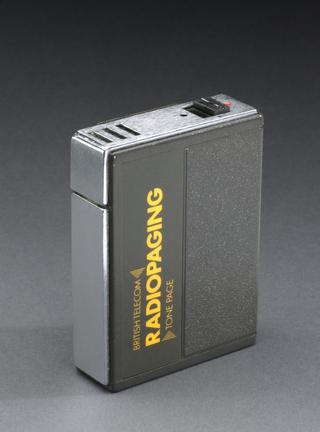
Wheatstone ABC telegraph receiver, 1942
- inventor:
- CHARLES WHEATSTONE












Early ABC telegraph receiver, invented by Sir Charles Wheatstone, unknown maker, England, 1842.
Charles Wheatstone was always interested in developing electric telegraph systems that did not require knowledge of a code. The ABC telegraph worked like a rotary telephone dial and could be used with little training. To transmit, letters were selected by pressing the appropriate buttons and rotating the handle continuously. The indicator stepped round the dial until the desired letter was reached, sending the correct number of electrical impulses to the receiver whose indicator stepped round in unison. It was slow, only transmitting 15 words a minute, but was simple to us. As such, it was popular for private telegraphic communication in wealthy households and with the Post Office for their lightly-used telegraph services.
Details
- Category:
- Telecommunications
- Object Number:
- 1949-320
- Materials:
- wood (unidentified), brass (copper, zinc alloy), paper (fibre product) and textile
- Measurements:
-
overall: 265 mm x 180 mm x 162 mm, 3.02 kg
- type:
- telegraph
- copyright:
- Unlinked Name
- credit:
- Lent by King's College London




